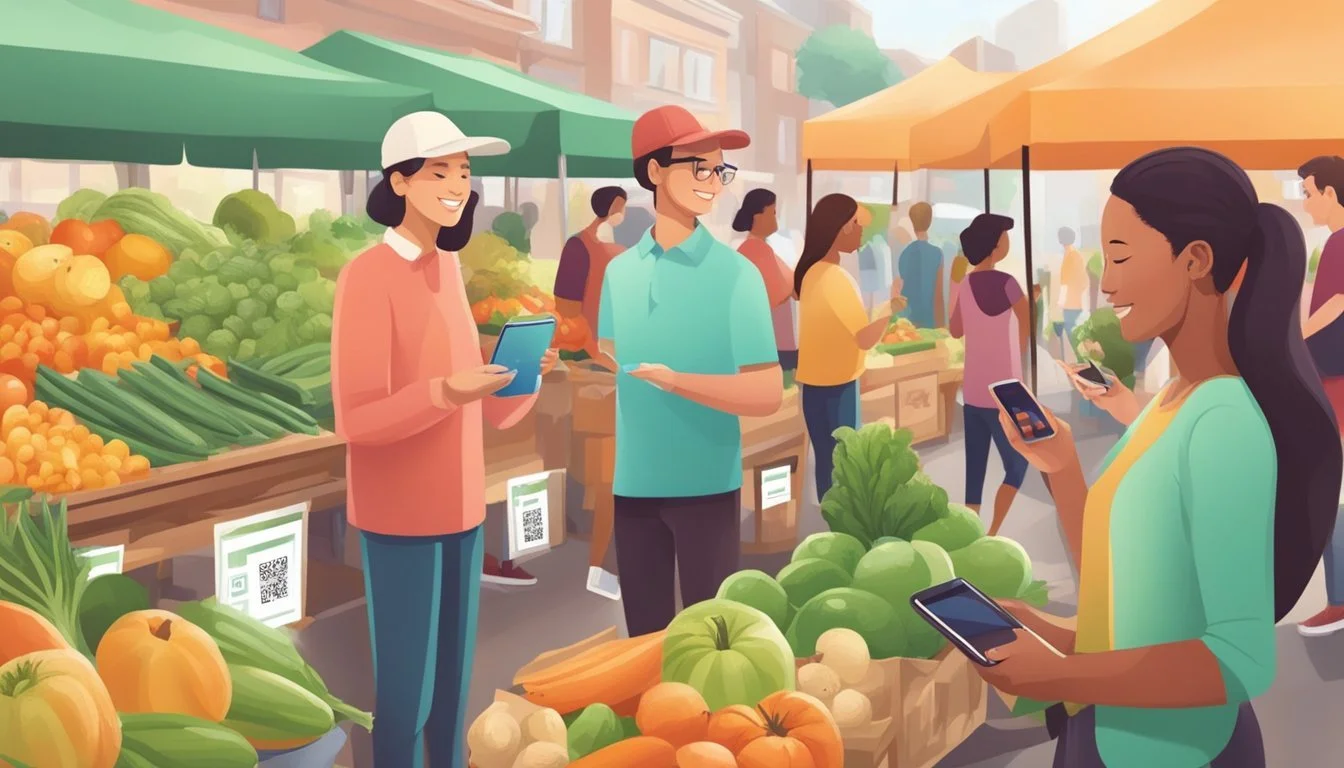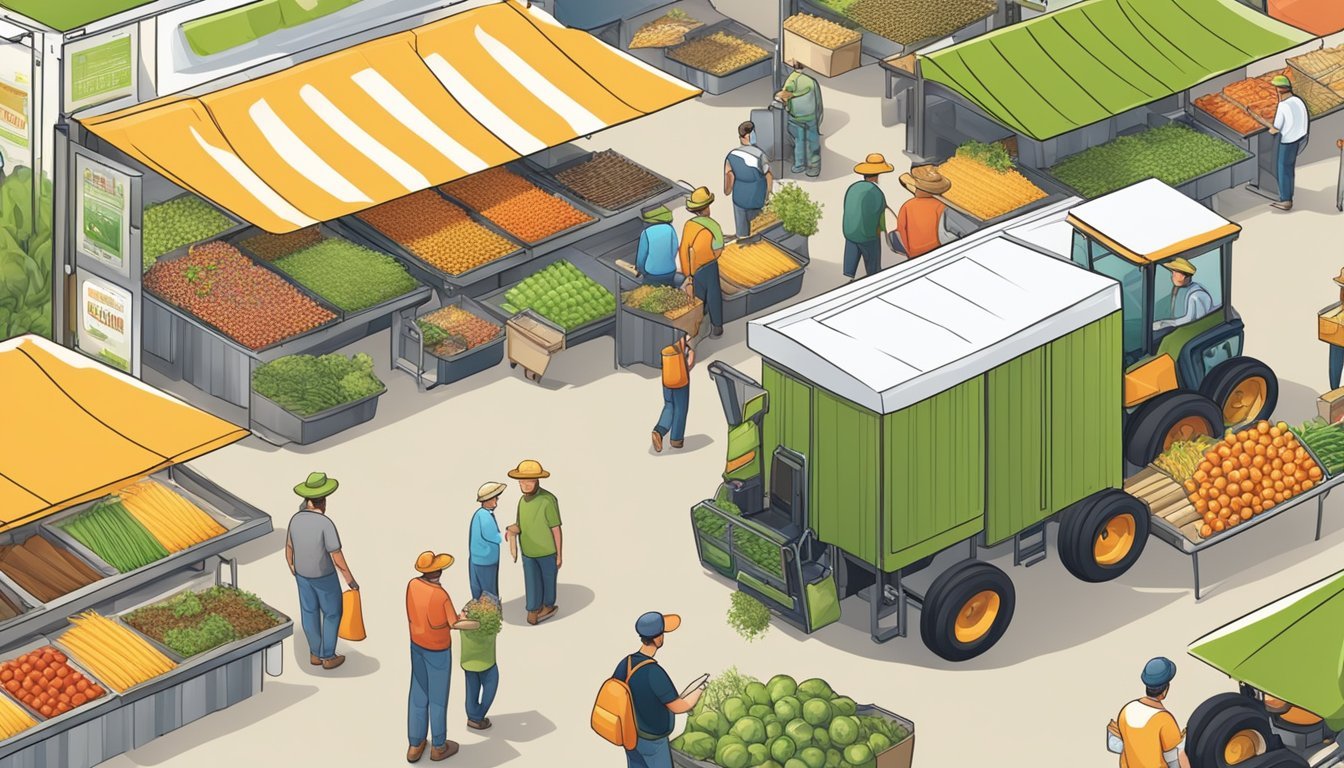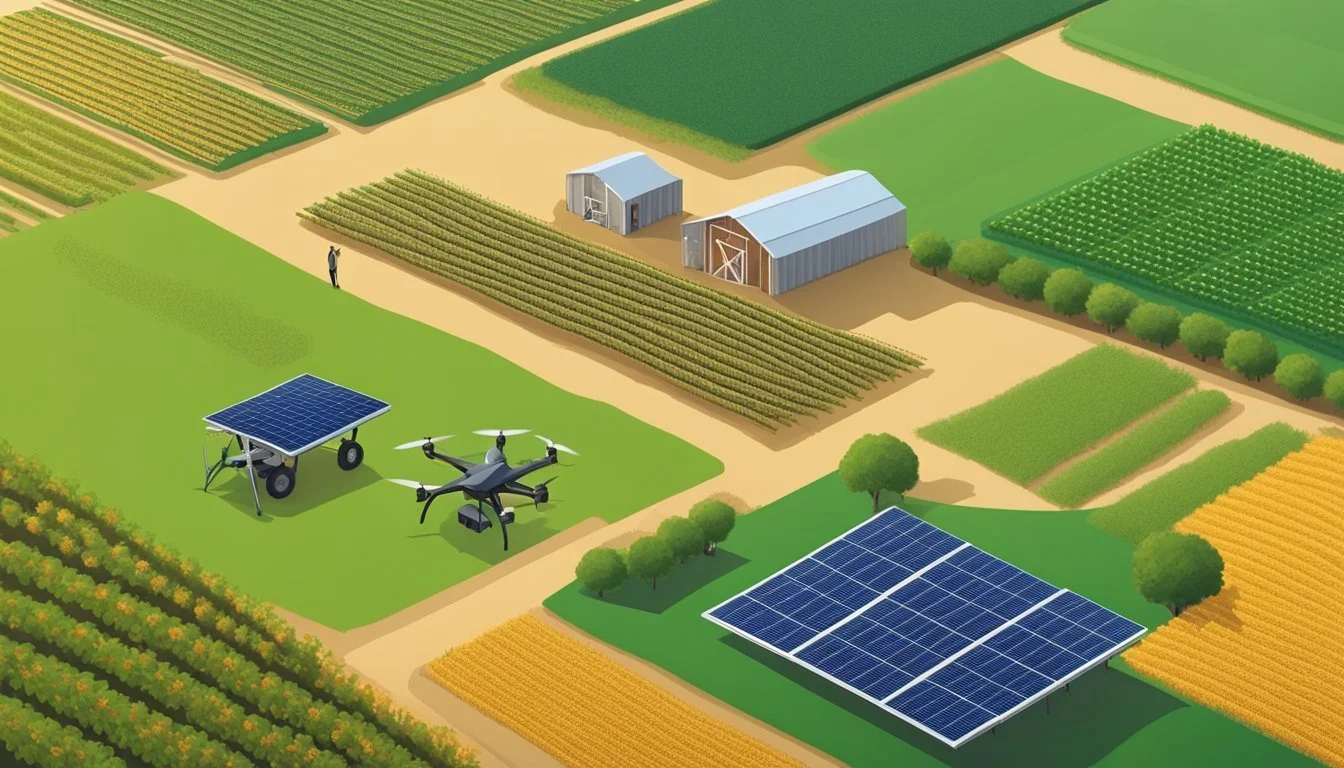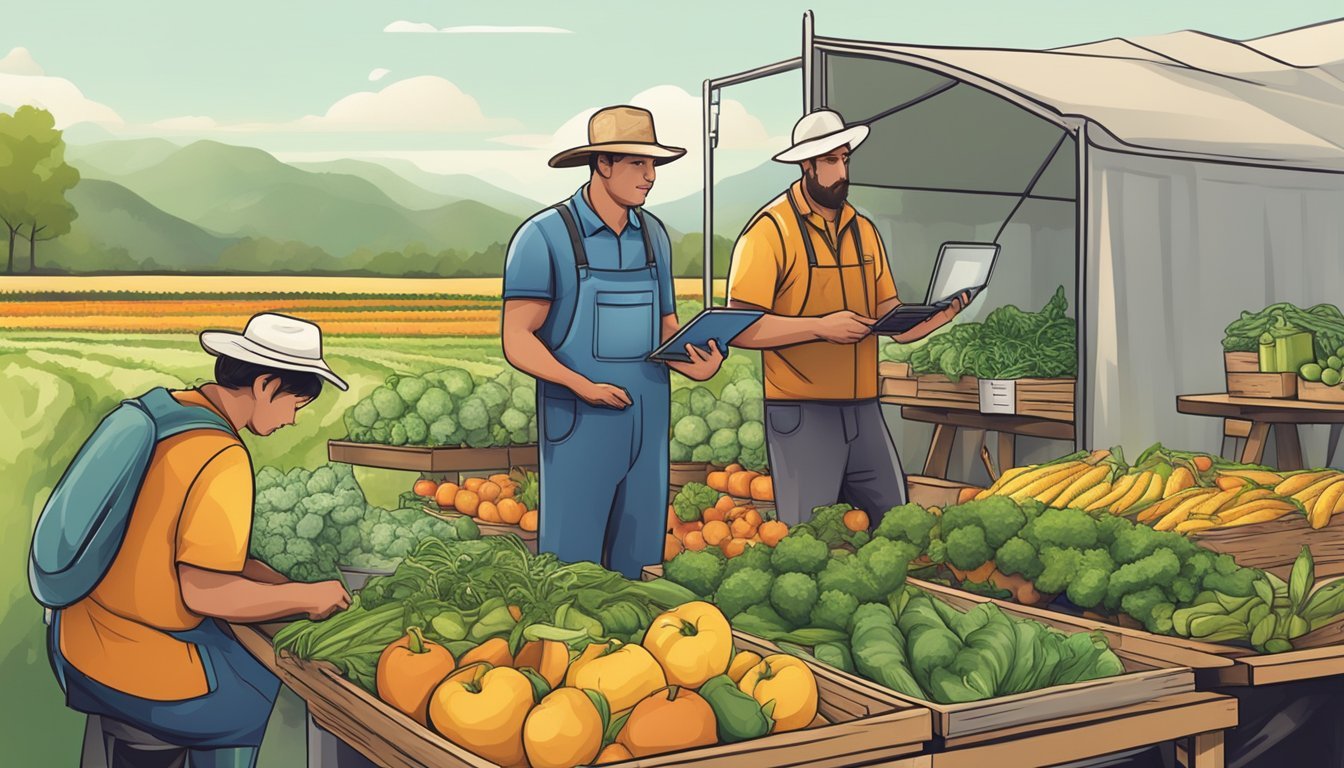The Role of Technology in Enhancing the Modern Farmers' Market Experience
The intersection of technology and agriculture has ushered in a new era for farmers' markets, refining the way agriculture products are sold and purchased. The integration of digital tools has not only optimized the operational aspects of farmers' markets but also enhanced the way consumers engage with their local food systems. Technology serves as a catalyst for market efficiency, allowing farmers to access real-time data, manage supply chains more effectively, and ultimately support better pricing strategies for their produce.
By implementing technologies such as digital payment platforms, inventory management applications, and dynamic pricing algorithms, modern farmers' markets are able to streamline transactions and accommodate consumer preferences for convenience and speed. This digital revolution in agriculture extends beyond the point of sale. It encompasses the entire farm-to-table continuum, providing farmers with advanced analytics to forecast demand, mitigate wastage, and align production with market needs.
The role of technology in modern farmers' markets signifies a shift towards more resilient food systems. With precision farming tools and data-driven decision-making, agricultural stakeholders are better equipped to respond to challenges, including climate variability and fluctuating market demands. This not only stabilizes market operations but also helps in reinforcing the sustainability of local food economies, ensuring that both producers and consumers benefit from the digital transformation of agriculture.
Evolution of Farming Practices
The transformation from traditional methods to high-tech agriculture has revolutionized how farmers operate and how markets are supplied.
From Traditional to Modern Agriculture
Traditional Agriculture primarily relied on manual labor, natural fertilizers, and rudimentary tools. It characterized a labor-intensive approach with limited productivity and was highly dependent on environmental conditions. Modern Agriculture has transitioned to Farm Management Systems that integrate technology to boost efficiency and output. This evolution encompasses the adoption of:
Mechanized equipment: For plowing, sowing, harvesting, and more.
Enhanced crop varieties: Developed through biotechnology to increase yield.
Irrigation systems: Including drip and sprinkler systems for optimal water usage.
Impact of Advanced Technologies on Farming
Advanced Technologies have greatly impacted farming practices by introducing:
Precision Agriculture: Utilizing GPS and data analytics for tailored crop management.
Automated Farming Equipment: Such as tractors and harvesters that require minimal human intervention.
IoT Devices: Sensors and drones that monitor crop health and environmental conditions in real-time.
These advancements significantly reduce resource waste and enhance the sustainability of agricultural practices, heralding a new era of agricultural development.
Sustainable Farming and Eco-Efficiency
Sustainable farming and eco-efficiency are integral to reducing environmental impact and enhancing resource management within the agriculture industry. These practices aim to produce food in environmentally friendly ways while maintaining the ecosystem.
Conservation of Resources
Water Use: Smart farming technologies are pivotal in conserving water. They utilize sensors that provide real-time data on soil moisture, enabling precise irrigation. This technology ensures water is applied only as needed, reducing waste and preserving this critical resource.
Energy Efficiency: Solar panels and wind turbines are increasingly common on sustainable farms, providing clean energy to power operations. This shift to renewables means farms can operate more efficiently and with less reliance on fossil fuels.
Eco-Friendly Agricultural Techniques
Crop Rotation and Polyculture: Utilizing crop rotation and polyculture helps maintain soil health and reduces the need for chemical fertilizers. These practices encourage biodiversity, which is a cornerstone of sustainable farming.
Natural Pest Management: Instead of chemical pesticides, sustainable farms often use natural predators and biopesticides. This approach reduces the chemical load on the environment and leads to healthier, more sustainable ecosystems.
Implementing sustainable farming and eco-efficiency techniques is not just beneficial for the environment; they also pave the way for the long-term viability of the agriculture industry.
Agricultural Productivity and Profitability
Modern farmers' markets are directly influenced by the efficiency and effectiveness with which farmers produce and market their crops. Advanced technological interventions play a pivotal role in enhancing agricultural productivity and profitability.
Maximizing Crop Yields
Precision Agriculture: The deployment of precision agriculture techniques, such as satellite imagery and soil sensors, enables farmers to optimize field conditions and increase yields. This approach ensures inputs like water, fertilizer, and pesticides are distributed efficiently across the fields.
Irrigation: Smart irrigation systems tailor watering schedules and volumes to the exact needs of the crop, thus increasing water-use efficiency and yield per hectare.
Disease Management: Machine learning and AI algorithms predict disease outbreaks, allowing for timely and targeted treatments, which minimizes losses and maintains productivity.
Financial Aspects of Farming
Market Prices: Farmers who utilize technology to track market prices in real-time can make informed decisions about when to sell their products, thereby maximizing their income and ensuring better profitability.
Financial Services: Technological access to financial services, including online banking, loans, and insurance, offers farmers more opportunities to stabilize their income and invest in productivity-enhancing technologies.
Savings: Efficiency gains from technology reduce the cost of inputs and operations, translating into significant savings and improved profit margins for the farmer.
By integrating these technologies, farmers not only boost their productivity but also secure their financial standing in a competitive market.
Precision Agriculture and Technology Usage
Precision agriculture leverages data and technology to enhance efficiency in farming practices. It employs innovative tools and strategies to analyze agricultural environments meticulously, enabling farmers to optimize resource usage and crop yield.
Data-Driven Farming Strategies
Precision agriculture centers around data collection and analytics to inform decision-making. Farmers use sensors and GPS technology to gather detailed information about their fields, including soil conditions, crop health, and weather patterns. This data allows for precise application of water, fertilizers, and pesticides, reducing waste and environmental impact. Technologies such as activity monitors for livestock provide insights into animal health, contributing to more efficient dairy farming.
Key Technologies:
Sensors: collect soil and crop data.
GPS: guides equipment and maps fields.
Activity monitors: track livestock health.
Innovations in Cultivation and Harvesting
In the realm of cultivation, precision farming introduces auto-steering equipment which aids in accurately planting crops, thereby improving planting efficiency. Digitization in the harvest process has seen advancements in machinery that can gather crops with minimal losses, while also collecting data to analyze post-harvest practices. The goal is to ensure that every step, from planting to harvest, is managed with a high degree of accuracy for better yield management.
Advancements:
Automated planting systems: they ensure precise seed placement.
Data-enhanced harvesting: combines equipped with analytics for improved yield.
By integrating such technologies, farmers can substantially enhance the sustainability and productivity of their agricultural practices.
Farm Management and Monitoring Systems
In modern markets, farm management and monitoring systems are crucial for ensuring optimal resource allocation and crop health. These technologies aid farmers in making data-driven decisions based on real-time farm data.
Resource Allocation and Fertilization
Resource Allocation plays a pivotal role in sustainable farming. By harnessing farming tech, farmers can fine-tune their fertilizer application, ensuring plants receive exactly what they need. Farm management systems track soil moisture and nutrient levels, allowing for precise fertilization strategies that reduce waste and environmental impact. For instance:
Soil Sensors: Measure moisture and nutrient content to guide resource distribution.
Crop Health and Growth Monitoring
Effective Crop Monitoring helps detect nutrient deficiencies and informs farmers about the health and development of their crops. Advanced farming tech with sensor integration provides granular crop growth data, crucial for timely interventions. Key monitoring tools include:
Drones and Satellites: Provide aerial imaging for large-scale crop health assessment.
Handheld Devices: Allow for on-the-spot analysis of crop conditions.
By taking advantage of such systems, farmers are well-equipped to manage their crops proactively, leading to healthier produce and more efficient markets.
Challenges Facing Modern Farmers
Modern farmers confront a multitude of challenges that directly impact their ability to produce food and engage with markets efficiently. Two significant barriers they face include climate variability and the digital divide, both of which also closely interlink with poverty levels.
Dealing with Climate Variability
Climate Change: Farmers increasingly grapple with unpredictable weather patterns. Extreme weather events, from prolonged droughts to intense storms, can devastate crops, leading to significant losses and food insecurity for consumers.
Resilience: To combat climate change, farming practices must evolve towards greater resilience. This adaptation may involve significant investment in new technology or infrastructure, which can be a barrier, especially for smaller operations.
Overcoming the Digital Divide and Poverty
Digital Divide: There is a gap between farmers who have access to modern digital tools and those who do not. This divide stands in the way of utilizing technology that could increase efficiency and connect farmers directly to consumers at the farmers' market.
Poverty: Economic hardship restricts farmers' ability to invest in new technologies. Overcoming poverty is crucial for enabling farmers to access the digital tools necessary to improve their market reach and efficiently manage their practices.
By addressing these challenges, farmers can enhance their market presence, improve food distribution, and create a more equitable and secure food system.
Adoption of Smart Farming Technologies
The integration of advanced technologies in farming practices is rapidly transforming agriculture into a highly efficient and data-driven industry. This section discusses key technologies that modern farmers adopt to enhance productivity and sustainability.
Utilization of IoT and Automation
Internet of Things (IoT) and automation are pivotal to smart farming. They enable the collection and analysis of real-time data, leading to informed decision-making. Sensors deployed throughout the farm measure various environmental parameters such as moisture, temperature, and soil quality. Farmers use this data to optimize watering schedules, detect plant diseases early, and manage resources more effectively.
Key benefits of IoT in Agriculture:
Efficiency: Automated systems regulate water and nutrient delivery, reducing waste.
Precision: Targeted data collection supports precision farming techniques, ensuring resources are directed precisely where needed.
Employing Drones and Robotics in Agriculture
The use of drones and robotics in agriculture is on the rise, primarily for their efficiency and ability to monitor vast areas quickly. Drones equipped with advanced imaging sensors provide aerial views of the crops, assessing plant health, pest infestation, and crop growth. This aerial perspective is crucial in making swift interventions.
Applications of Drones and Robotics:
Monitoring: Drones conduct regular fly-overs to gather data, providing insights into crop health and soil conditions.
Automation: Robotics assist in repetitive tasks such as harvesting, planting, and weeding, improving labor efficiency.
Connectivity and Tech in Farming
Modern farmers' markets are increasingly influenced by technological advancements in connectivity and data analytics, fundamentally altering agricultural practices and efficiency.
Improving Internet and Mobile Connectivity
Internet connectivity and mobile technologies have become the backbone of modern agriculture, enabling enhanced communication and operation across farms of all sizes. Connectivity is critical for using Internet of Things (IoT) devices, which collect real-time data on soil conditions, crop health, and livestock. This ecosystem of connected devices relies on a robust mobile network that permits farmers to monitor and manage their operations remotely.
Mobile Phones: Essential tools for farmers to access information services and mobile applications.
Cloud Computing: Allows data to be stored and managed effectively, supporting the integration of IoT devices.
Blockchain: Emerging as a method to ensure transparency and traceability in supply chains linked to farmer's markets.
Leveraging Data Analytics for Farming Decisions
Farmers are now equipped to make data-driven decisions using data analytics. This involves the analysis of large datasets to uncover patterns and insights that influence decision-making processes. Predictive models, made possible by robust analytics, forecast crop yields, pest infestations, and market demand to better prepare farmer's market vendors for the upcoming season.
Predictive Modeling: Utilized to anticipate future market trends and consumer needs.
Decision Making: Informed by real-time data, leading to more accurate and timely responses to market changes.
Information Services: Delivered via mobile applications, providing farmers with instant access to weather forecasts and market prices.
By harnessing these technologies, farmers can optimize their offerings for the market, aligning production with buyer demand and reducing waste.
Resource and Irrigation Management
Modern farmers' markets benefit substantially from advanced technology, particularly in the crucial areas of resource and irrigation management. These technologies optimize water usage and incorporate next-generation irrigation systems to enhance efficiency and sustainability.
Optimizing Water Usage with Technology
Irrigation management technology has revolutionized how farmers use water, a critical resource for agriculture. Automated irrigation systems are now able to determine the exact water needs of crops in real time. This precision is achieved through soil moisture sensors and weather data analytics that inform smart irrigation controllers. These controllers adjust watering schedules, targeting specific times during the day or night to minimize evaporation and use water more effectively. Consequently, technology facilitates significant water savings and ensures that crops receive optimal hydration to thrive.
Smart irrigation involves:
Soil moisture sensors: gauge the soil's water content.
Weather predictions: adjust irrigation based on forecasts.
Automated controllers: tailor watering schedules to plant needs.
Next-Gen Irrigation Systems
The advent of next-gen irrigation systems represents a leap in agricultural resource management. These systems are not only automated but also adaptive, often integrated with Internet of Things (IoT) devices that allow for remote monitoring and control. This means that farmers can adjust irrigation schemes from anywhere, using smartphones or computers—a huge benefit for resource management at farmers' markets.
Features of next-gen irrigation systems include:
Remote access: manage systems from any location.
Data integration: utilizes big data for informed decision-making.
Resource-efficient: designed to minimize water waste and enhance crop yield.
Through the use of these cutting-edge tools, farmers are equipped to manage resources more prudently while maintaining the health of their crops and contributing to environmental sustainability.
Support Systems and Training for Farmers
Effective support systems and training initiatives are critical for empowering farmers to adapt and thrive in a technology-centric market. They provide a blend of financial assistance, knowledge transfer, and policy guidance that enables agricultural producers to enhance their production capabilities and market presence with agility and reduced reliance on manual labor.
Knowledge Transfer and Collaborations
Knowledge transfer networks serve as the cornerstone for advancing farmer education. For instance, digital platforms, like the Colombian Cattle Growers Federation's WhatsApp Ganadero, have revolutionized how farmers collaborate and learn. On these platforms, over 19,000 livestock producers share insights and practical advice, bypassing traditional barriers in collaborative environments. Programs like these often segment participants into regional groups to ensure information is locally relevant and immediately applicable.
Collaborations extend beyond peer-to-peer sharing. They encompass partnerships with academic institutions and private companies to expose farmers to the latest agricultural technologies and practices. Drones, precision farming equipment, and data analytics are now part of the curriculum in farmer training programs, encouraging the adoption of advanced tools that augment traditional farming methods.
Government Interventions and Policies
Government's role remains pivotal, with interventions and policies that drive the adoption of modern farming technologies. Authorities often design financial assistance programs and farming subsidies that lower the economic barriers for small and medium-sized farmers. These policies aim to support the farmers' endeavors to become market-competitive by using innovative tech solutions.
Policies also set the framework for agriculture-centric innovation, prioritizing sustainable practices and ensuring farmers have access to resources necessary for technology implementation. Regulations governing data usage and privacy can directly impact how farmers collect and utilize farm-generated data. With estimates showing an average farm might produce approximately 4.1 million data points daily by 2050, government policies must enable farmers to manage such volumes effectively and securely.
The Future of Agriculture and Market Shopping
Technological advancements are poised to revolutionize both agriculture and the consumer shopping experience in markets, particularly influencing consumer behavior trends and enhancing market access for small-scale farmers.
Predictive Trends in Consumer Behavior
Tech-driven data analytics have begun enabling consumers to make informed decisions about their food purchases. By analyzing shopping habits and population trends, technology can predict consumer behavior, allowing markets to stock precisely what consumers are likely to buy. For instance, IoT-powered apps can provide insights into which organic vegetables a community prefers, or which fruits are in season and therefore at peak demand.
Innovations in shopping platforms also allow for the personalization of the market experience. For instance, consumers may receive notifications for their preferred products or get discounts based on their shopping history. Such agility in responding to consumer needs not only enhances the shopping experience but can also bolster market efficiency and reduce waste.
Market Accessibility for Small-Scale Farmers
Technology is breaking down barriers to market access for small-scale farmers, providing them with tools that were once available only to large agribusinesses. Digital platforms can connect farmers directly with consumers, bypassing traditional market structures and expanding their reach. Agricultural drones and remote sensing technologies give them insights into crop health, maximizing their yields and thus, their market offerings.
Moreover, credit solutions facilitated by fintech are increasingly available to these farmers, allowing them to invest in technologies that improve their production and market presence. For instance, micro-loans provided through mobile apps can help a farmer purchase a greenhouse cover, extending the growing season and ensuring year-round market supply. This democratization of market access strengthens the position of small-scale farmers in the economic landscape.
Through these technological advancements, markets are becoming more efficient and responsive, and farmers are empowered to meet consumer demand more effectively. The future of agriculture and market shopping heralds a more connected and data-informed landscape for all stakeholders involved.










